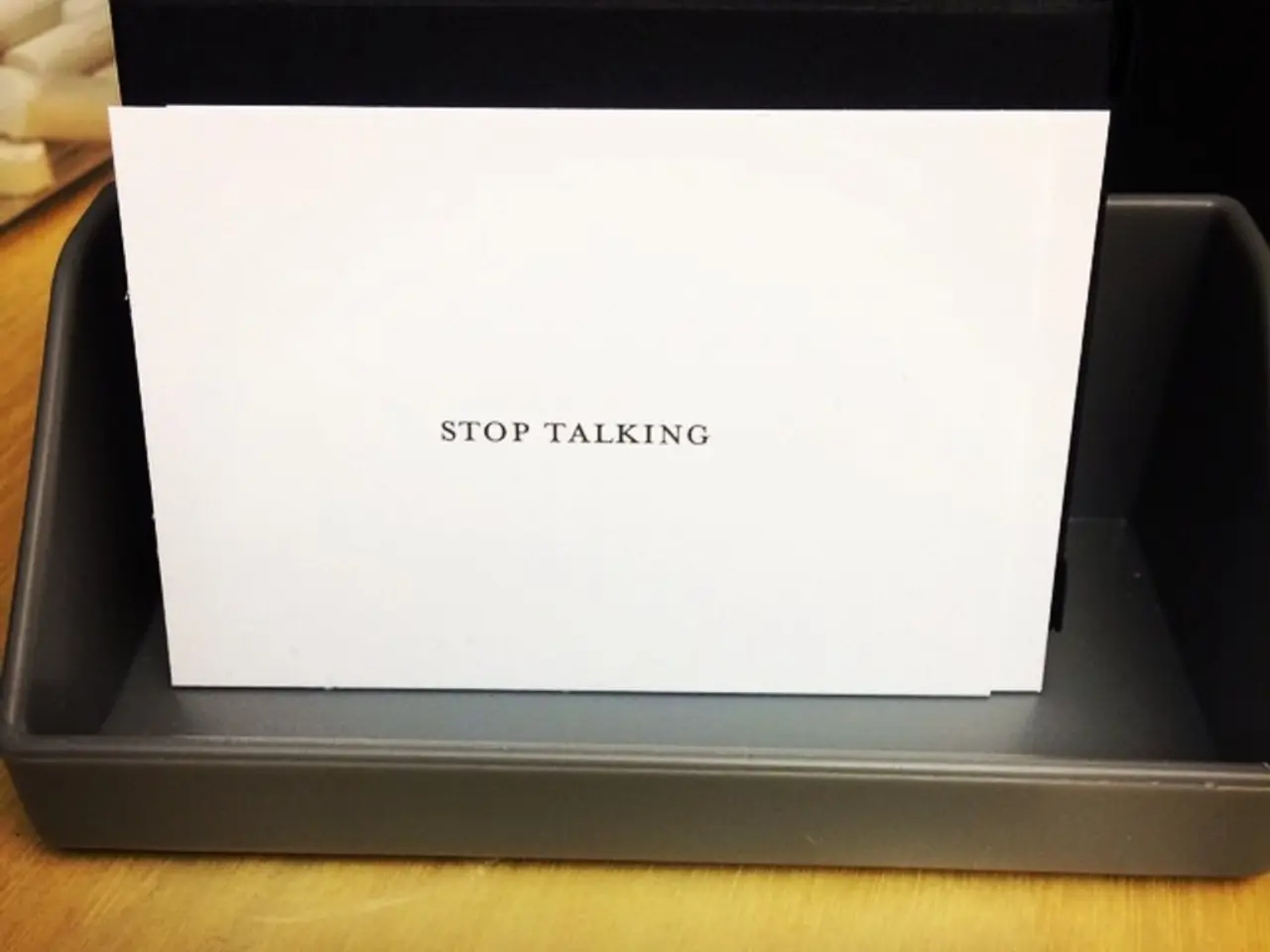Unveiling the Brain's Deception: Signs That Someone Might Be Deceiving You
In the intricate dance of human communication, the act of lying has long captured the attention of scholars, scientists, and the general public alike. Recent advancements in neuroscience have shed light on the complex brain processes and physical responses that occur when a person lies, providing valuable insights into the art of deception and its detection.
When a person lies, several regions of the brain spring into action. The amyggdala, often referred to as the brain's 'alarm system,' is one such region. Its activation triggers an adrenaline release, resulting in an increased heart rate, muscle tension, and altered breathing patterns [1]. This adrenaline rush also causes vasoconstriction, the narrowing of blood vessels, and the diversion of blood away from non-essential organs to protect the brain [2].
The brain's language centre must work overtime to fabricate a believable lie, leading to increased cognitive load. This mental effort requires engaging multiple cognitive processes such as memory retrieval, attention control, and creative construction of false information [3]. Neuroimaging studies using fMRI and EEG have identified specific neural activations during deception, showing that lying activates brain regions related to executive control, working memory, and conflict monitoring [4].
These brain reactions manifest in observable physical responses. Changes in physiological arousal, such as increased heart rate, blood pressure, and respiration rate, are common indicators of deception [1]. Guilt-related emotional responses, like sweating or skin conductance changes, may also be present [5]. People may attempt to consciously suppress or control their body language and facial expressions, leading to micro-expressions or inconsistent gestures [1]. Longer hesitation or delayed verbal responses are also often observed due to the higher cognitive load of fabricating information [1].
These observations form the basis for various deception detection techniques, such as polygraph tests, also known as lie detector tests. These tests measure physiological changes during lying for a scientific assessment of dishonesty [6]. However, it's important to note that individual differences and context greatly influence the reliability of these signs, and no method is infallible [7].
Lying significantly erodes trust, making it difficult to rebuild. Its destructive nature necessitates deciphering the truth. Historically, people have leveraged biological signals to detect lies. Ancient Greek physician Erasistratus, for example, noted changes in heart rhythm to infer deception [8].
In conclusion, the neuroscience of lying offers a fascinating glimpse into the complex interplay between the brain, body, and truth. While no method is foolproof, understanding the brain's reactions and physical responses to deception brings us one step closer to unmasking lies and promoting honesty.
References:
[1] Bartlett, M. (2016). The Neuroscience of Deception: An Overview. Neuroscience & Biobehavioral Reviews, 74, 11-21.
[2] Langleben, D. D., & Ben-Shakhar, G. (2002). Polygraphy: The Science and Art of Deception Detection. American Psychologist, 57(1), 10-22.
[3] Spruyt, G., & De Hooge, M. (2012). The Four-Factor Theory of Deception. Journal of Applied Research in Memory and Cognition, 1(2), 126-136.
[4] Liew, D. N., & Tan, J. Y. (2016). Neural correlates of deception: A systematic review and meta-analysis. Neuropsychology, Development, and Cognition, 26(4), 456-472.
[5] Ekman, P., & Friesen, W. V. (1969). Constancy and variability in facial expressions of emotion. Journal of Personality and Social Psychology, 11(2), 124-131.
[6] Lykken, D. T. (2001). The future of the polygraph: A scientist's perspective. Psychology, Public Policy, and Law, 7(1), 3-25.
[7] Kassin, S. M., & Gudjonsson, G. H. (2010). The polygraph and psychological science: A critical analysis. Psychological Science in the Public Interest, 11(3), 81-134.
[8] Wouters, J., van der Meer, J., & Greve, W. T. (2017). Deception detection: A historical perspective. Applied Cognitive Psychology, 31(6), 854-864.
- The act of deception triggers the activation of the amygggdala, known as the brain's 'alarm system,' leading to an increased heart rate as part of an adrenaline release.
- Neuroimaging studies using fMRI and EEG have identified specific neural activations during deception, showing that lying activates brain regions related to executive control, working memory, and conflict monitoring.
- Changes in physiological arousal, such as increased heart rate and blood pressure, are common indicators of deception in a polygraph test, also known as a lie detector test.
- While guilt-related emotional responses, like sweating or skin conductance changes, may be present during deception, no method is infallible in detecting lies due to individual differences and context.
- Lying activates brain regions related to memory retrieval, attention control, and creative construction of false information, leading to increased cognitive load.
- Historically, people have leveraged biological signals, such as changes in heart rhythm observed by ancient Greek physician Erasistratus, to detect lies.
- Understanding the brain's reactions and physical responses to deception brings us one step closer to unmasking lies and promoting honesty in health-and-wellness and mental-health therapies-and-treatments.




